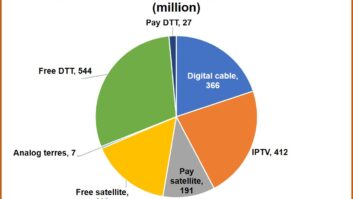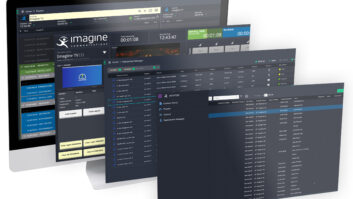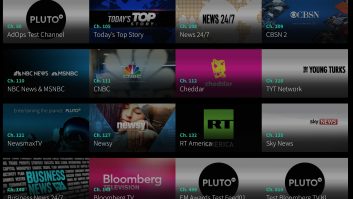
TV has gone mobile, thanks to Twitter and Facebook, writes Gareth Capon, CEO of social video company, Grabyo.
With consumers increasingly making conversation and sharing their TV experience on digital platforms, broadcasters and content providers must now learn how to own, drive and monetise engagement across social media.
If broadcasters and content providers want to engage with viewers and fans, they must do so on social platforms. During primetime, there are few days when at least one TV show or TV event is not trending on Twitter. This is particularly true for coverage of sports, which comprise somewhere between two to three per cent of TV programming in any given month, but generate close to 50 per cent of Twitter activity, according to Nielsen SocialGuide.
It is also clear that mobile will soon be the dominant platform for all internet experiences across the globe. Some 40 per cent of YouTube’s traffic now comes from mobile, compared to 25 per cent last year and just six per cent only two years ago; yet this is a fraction of the mobile activity seen by major social networks and reflected by social advertising revenue – mobile advertising revenue now represents over 75 per cent of total worldwide advertising revenue for Twitter.
Broadcasters and content providers must find ways to connect with consumers across multiple media channels and devices to engage their audiences and deliver compelling ad inventory for brands. Thanks to the instantaneous nature of Twitter and the fact that viewers share their TV experience on social media as events unfold, broadcasters must also engage with consumers in real-time.
Following the introduction of live TV clips and video content on Twitter, driven by the social platform’s quest for greater ad revenue and user growth, there is now increasing momentum behind live TV clip-sharing as a solution. Successful trials have demonstrated the high potential of real-time video clips for driving engagement and the format is also proving popular with brands. Already, we are seeing individual clips generating hundreds of thousands of clip plays within a few minutes of being shared and with 72 per cent of real-time video traffic across mobile devices, it’s clearly engaging the mobile generation too.
However, real-time video does present challenges of its own. Broadcasters’ digital workflow is not geared towards real-time and legacy systems are not optimised for rapid, flexible editing and content creation. Distributing live TV clips to millions of viewers in real-time through multiple social media platforms and as a seamless experience on any device, is also far from simple. It is taking broadcasters and content providers up to twenty minutes to create and share clips and even then they may not be optimised for mobile devices – as a result, they are missing out on the lion’s share of the opportunity. Those having more success are using cloud-based systems that are designed for the instantaneous world of social media, focused on mobile and able to rapidly scale to meet the huge peaks of engagement.
With Twitter Amplify, broadcasters and content providers can significantly boost viral distribution and discovery of real-time video. Furthermore, it allows content owners to use paid media support from sponsors and advertising partners to fund the distribution of their content across Twitter – extending reach to a much wider and relevant demographic and driving a second wave of viral reach. Indeed, this audience can be many times the size of their existing (organic) reach – potentially the entire audience of Twitter. With brands looking for ways to drive engagement at scale and engage with consumers across , ottsocial media and mobile devices, there’s also no shortage of demand for the ad-inventory that the real-time video provides.
Real-time video can also be used to promote new shows and social media audiences (using the media assets which accompany the videos, such as pre/post roll advertising to drive awareness of upcoming shows). It can also be used to drive interactivity such as voting, betting, payments, and for pay TV customers, sell additional packages, upgrades and content services.
This process closes the virtuous circle for social video distribution: from sharing short-form, live video clips which generates huge levels of engagement across social platforms to driving core KPIs for the broadcaster or rights holder (in terms of tune-in, digital content sales, upgrades and entitlements to new OTT services). As such, real-time video will play a key role in the future business models for TV distribution and consumption.
The impact from a content rights perspective will be particularly interesting as rights holders may look to carve out real-time video as a separate package to maximise its commercial and distribution value in the future. The mobile internet has scant regard for geographic boundaries and mobile offers rights holders a global audience. With awareness around real-time now accelerating, it will be fascinating to see how this market develops over the coming months.
Gareth Capon is CEO at Grabyo, the real-time social video company. He was previously Product Development Director at BSkyB. You can follow him @garethcapon where he tweets about TV and mobile.







